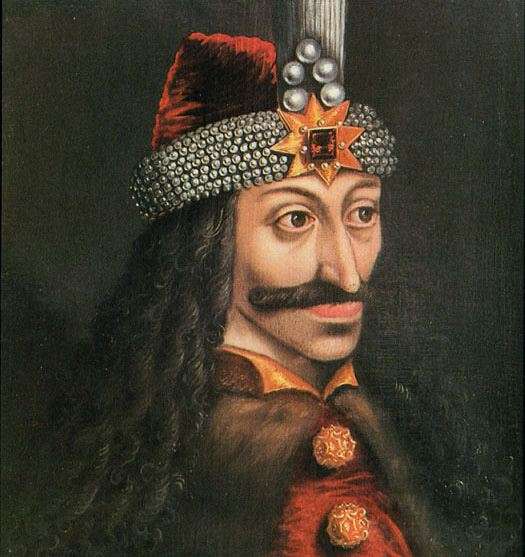So let's take a look at the idea for a moment, shall we? I think a little history is in order.
The notion of vampirism has existed for millennia; cultures such as the Mesopotamians, Hebrews, Ancient Greeks, and Romans had tales of demons and spirits which are considered precursors to modern vampires. However, despite the occurrence of vampire-like creatures in these ancient civilizations, the folklore for the entity we know today as the vampire originates almost exclusively from early-18th-century southeastern Europe, when verbal traditions of many ethnic groups of the region were recorded and published. In most cases, vampires are remnants of evil beings, suicide victims, or witches, but they can also be created by a malevolent spirit possessing a corpse or by being bitten by a vampire. Belief in such legends became so pervasive that in some areas it caused mass hysteria and even public executions of people believed to be vampires.
It is difficult to make a single, definitive description of the folkloric vampire, though there are several elements common to many European legends. Vampires were usually reported as bloated in appearance, and ruddy, purplish, or dark in color; these characteristics were often attributed to the recent drinking of blood. Indeed, blood was often seen seeping from the mouth and nose when one was seen in its shroud or coffin and its left eye was often open. It would be clad in the linen shroud it was buried in, and its teeth, hair, and nails may have grown somewhat, though in general fangs were not a feature.
Good thing too because that looks pretty bad.
The causes of vampiric generation were many and varied in original folklore. In Slavic and Chinese traditions, any corpse that was jumped over by an animal, particularly a dog or a cat, was feared to become one of the undead. A body with a wound that had not been treated with boiling water was also at risk. In Russian folklore, vampires were said to have once been witches or people who had rebelled against the Russian Orthodox Church while they were alive. So in Russia I am going to turn into a vampire when I die. Great.
Many elaborate rituals were used to identify a vampire. One method of finding a vampire's grave involved leading a virgin boy through a graveyard or church grounds on a virgin stallion—the horse would supposedly baulk at the grave in question.Generally a black horse was required, though in Albania it should be white. So that is why those priest had those little boys. They were looking for vampires. Riiiiiight. Holes appearing in the earth over a grave were taken as a sign of vampirism.
such as scythes or sickles near the grave to satisfy any demons entering the body or to appease the dead so that it would not wish to arise from its coffin. Just like the Ancient Greek practice of placing an obolus in the corpse's mouth to pay the toll to cross the River Styx in the underworld. Some suggest that instead, the coin was intended to ward off any evil spirits from entering the body, and this may have influenced later vampire folklore. This tradition persisted in modern Greek folklore about the vrykolakas, in which a wax cross and piece of pottery with the inscription "Jesus Christ conquers" were placed on the corpse to prevent the body from becoming a vampire.Other methods commonly practiced in Europe included severing the tendons at the knees or placing poppy seeds, millet, or sand on the ground at the grave site of a presumed vampire; this was intended to keep the vampire occupied all night by counting the fallen grains, because apparently vampires have OCD and just HAVE to count, hence The Count from sesame street.
So where do we get the vampire that we have today? Easy, books.
While even folkloric vampires of the Balkans and Eastern Europe had a wide range of appearance ranging from nearly human to bloated rotting corpses, it was interpretation of the vampire by the Christian Church and the success of vampire literature, namely John Polidori's 1819 novella The Vampyre that established the archetype of charismatic and sophisticated vampire; it is arguably the most influential vampire work of the early 19th century, inspiring such works as Varney the Vampire and eventually Dracula, The Vampyre was itself based on Lord Byron's unfinished story "Fragment of a Novel", also known as "The Burial: A Fragment", published in 1819.
However, it is Bram Stoker's 1897 novel Dracula that is remembered as the quintessential vampire novel and which provided the basis of modern vampire fiction. Dracula drew on earlier mythologies of werewolves and similar legendary demons and "was to voice the anxieties of an age", and the "fears of late Victorian patriarchy". The success of this book spawned a distinctive vampire genre, still popular in the 21st century, with books, films, video games, and television shows.
Vlad the Impaler aka Count Dracula aka not a nice guyAlthough vampiric entities have been recorded in many cultures, and may go back to "prehistoric times", the term vampire was not popularized until the early 18th century, after an influx of vampire superstition into Western Europe from areas where vampire legends were frequent, such as the Balkans and Eastern Europe, although local variants were also known by different names, such as vrykolakas in Greece and strigoi in Romania. This increased level of vampire superstition in Europe led to mass hysteria and in some cases resulted in corpses actually being staked and people being accused of vampirism. The sad thing is that it still happens now. In 2002 -2003 there were allegations of vampire attacks in the African country of Malawi with mobs stoning one individual to death and attacking at least four others, including Governor Eric Chiwaya, based on the belief that the government was colluding with vampires.
Still no worries kids, we have top people on the case. In 2006, a physics professor at the University of Central Florida wrote a paper arguing that it is mathematically impossible for vampires to exist, based on geometric progression. According to the paper, if the first vampire had appeared on 1 January 1600, and it fed once a month (which is less often than what is depicted in films and folklore), and every victim turned into a vampire, then within two and a half years the entire human population of the time would have become vampires. The paper made no attempt to address the credibility of the assumption that every vampire victim would turn into a vampire but I am not a vampire and there are vegetarians out there so they can't be either.
How do you protect yourself? Easy.
Garlic is the usual suspect but if you are out I got you covered, a branch of wild rose and hawthorn plant are said to harm vampires, and in Europe, sprinkling mustard seeds on the roof of a house was said to keep them away. There is the obvious sacred items, like a crucifix, rosary, or holy water and vampires are said to be unable to walk on consecrated ground, or cross running water for some reason.Although not traditional, mirrors have been used to ward off vampires when placed, facing outwards, on a door (in some cultures, vampires do not have a reflection and sometimes do not cast a shadow, perhaps as a manifestation of the vampire's lack of a soul). This attribute, although not universal (the Greek vrykolakas/tympanios was capable of both reflection and shadow), was used in Dracula and has remained popular in movies and books. Some traditions also hold that a vampire cannot enter a house unless invited by the owner, although after the first invitation they can come and go as they please. Though folkloric vampires were believed to be more active at night, they were not generally considered vulnerable to sunlight.
This is hawthorn for those in need
And here is my favorite part of all. You see kids, since the term vampire is actually a recent development. Before what we think of as vampires were several different demons or spirits, even gods. They all consumed the flesh or blood to steal one's spirit. There were all sorts of different flavors and looks, but they all did the same thing, they ate people. When Christian came around is when things started getting a bit more unified. When everyone started converting the idea became more solid. The vampire was viewed as "a dead person who retained a semblance of life and could leave its grave-much in the same way that Jesus had risen after his death and burial and appeared before his followers." In the Middle Ages, the Christian Church reinterpreted vampires from their previous folk existence into minions of Satan, and used an allegory to communicate a doctrine to Christians: "Just as a vampire takes a sinner's very spirit into itself by drinking his blood, so also can a righteous Christian by drinking Christ's blood take the divine spirit into himself. So Jesus was a vampire.
Still, it is odd that every culture out there has a version of a vampire. So who knows, maybe there are vampires out there and they are just better about not drinking blood from people, or they just frequent blood banks. There are a lot of theories but it is interesting. Why are vampires so stuck in the human psyche that we can't seem to get them out and we will kill people under the suspicion that they just might be one.
So in truth, Twlight is completely off, just like everything else. We do not really seem to know what vampires are after all.




No comments:
Post a Comment